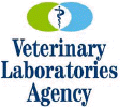



VLA Annual Horizon Scanning Report: Parasitology
The Veterinary Laboratories Agency (VLA) in the UK has just published its annual report giving a summary of papers on this topic published in 2009. There is a section on coccidiosis in poultry.
The complete report is a summary of a horizon scanning report of 207 peer and non-peer reviewed papers in parasitology published in 2009, of relevance to the VLA, DEFRA and wider industry.
This report addresses and supports many of the key aims of the Animal Health and Welfare Strategy including:
- Our disease status is amongst the highest in the world and we able to trade our animals and animal products internationally.
- Consumers value the confidence they have in food produced safely from healthy animals that are well cared-for.
- Livestock keeping is part of a competitive British farming industry, which succeeds by meeting the needs of consumers at home and abroad, producing food safely to high standards of health and welfare.
This report also supports the aim of better dissemination of research to veterinarians and livestock producers to aid development of the farming industry to improve quality and increase cost-effectiveness.
This sixth annual review of relevant scientific publications highlights risks to public, animal and environmental health and to sustainable farming from parasitic diseases of animals. It also identifies means by which these risks could be mitigated or managed.
The only section of the report referring to poultry is the one on coccidiosis.
Coccidiosis in Poultry
Control
A paper 'Past and future: vaccination against Eimeria' (V. McDonald & M. Shirley, 2009. Parasitology, 136: 426-431) gave a thorough overview of the use of vaccines to control coccidiosis in poultry. The conclusion was that live attenuated vaccines will be with us for the foreseeable future and that recombinant vaccines are still a long way off.
Marcelo Beltrao Molento from Brazil published a paper entitled 'Parasite control in the age of drug resistance and changing agricultural practices'. Veterinary Parasitology, 2009. 163: 229–234), in which he looked at different control methods that are relevant to all parasites.
T. Rathinam and H.D. Chapman from Arkansas University, USA, reported on the 'Sensitivity of isolates of Eimeria from turkey flocks to the anticoccidial drugs amprolium, clopidol, diclazuril and monensin', Avian Diseases, (2009), 53: 405-408. Widespread resistance to anticoccidial drugs was confirmed.
Another paper from the University of Arkansas by Gadde, Chapman, Rathinam and Erf entitled 'Acquisition of immunity to the protozoan parasite Eimeria adenoeides in turkey poults and the peripheral blood leukocyte response to a primary infection', Poultry Science, (2009) 88: 2346-2352 concluded that initiation of both innate and adaptive cellular immune activities are designed to effectively cope with a parasitic, intracellular pathogen.
At the WAAVP Conference 2009 in Calgary, Canada, Ralph Marshall (VLA) gave a presentation entitled 'Eimeria praecox: Pathological effects and variability in virulence of field strains', in which he reported that a field isolate of E. praecox from Wales was found to be more pathogenic than E. acervulina. (Abstract CS46.2, in WAAVP Proceedings).
This work was also published by R.B.Williams, R.N.Marshall, M. Pagès, M. Dardi and E. del Cachoas as 'Pathogenesis of Eimeria praecox in chickens: virulence of field strains compared with laboratory strains of E. praecox and E. acervulina. Avian Pathology (2009) 38(5): 359-366.
A paper by Ollie Gladstone from Ridgeway Research, UK,entitled 'Identifying humane endpoints in turkeys artificially infected with coccidiosis' posed a number of thought-provoking questions as to how to determine a humane, meaningful challenge dose for studies on efficacy, pathology, etc. (Abstract CS46.3 in WAAVP Proceedings).
Technical
A paper by Schwarz et al. from USDA, Beltsville reported on 'Genomic analysis of Eimeria spp. populations in relation to performance levels of broiler chicken farms in Arkansas and North Carolina' in Journal of Parasitology, (2009) 95(4): 871-880. Not surprisingly, they found individual farm performance was correlated to the species and pathogenicity of Eimeria detected.
A very pertinent paper by Fabrizio Bruschi from Pisa University in Italy asked the question 'How parasitology is taught in medical facilities in Europe? Parasitology, Lost?' Although he looked at medical schools and concluded that there is a reduction in both specialist parasitology departments and the number of hours that parasitology is taught, indications are that the situation is similar in veterinary schools.
Further Reading
| - | You can view the full report by clicking here. |
Further Reading
| |
- | Find out more information on coccidiosis by clicking here. |
June 2011








